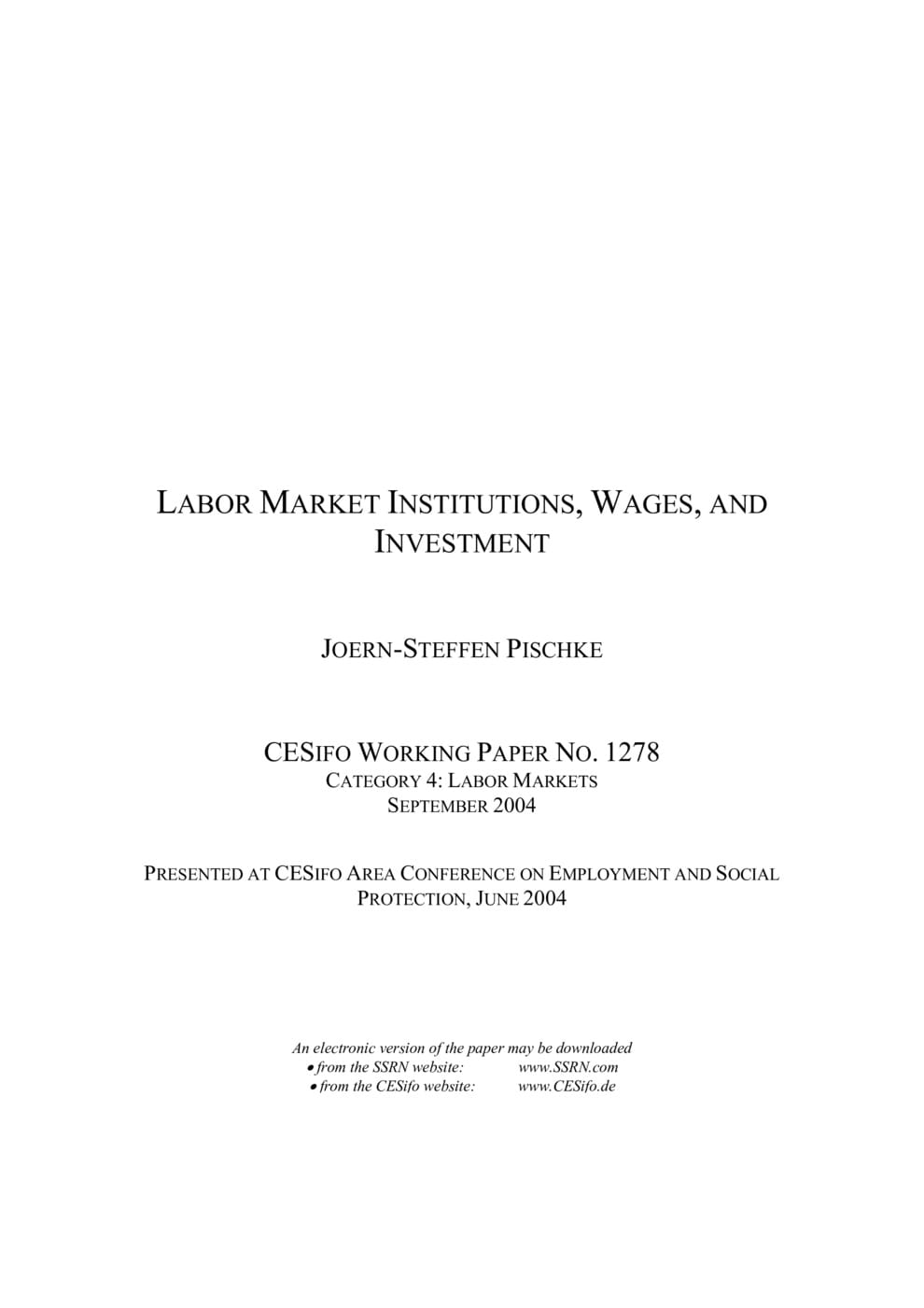Labor Market Institutions, Wages and Investment
CESifo, Munich, 2004
CESifo Working Paper No. 1278

Labor market institutions, via their effect on the wage structure, affect the investment decisions of firms in labor markets with frictions. This observation helps explain rising wage inequality in the US, but a relatively stable wage structure in Europe in the 1980s. These different trends are the result of different investment decisions by firms for the jobs typically held by less-skilled workers. Firms in Europe have more incentives to invest in less-skilled workers, because minimum wages or union contracts mandate that relatively high wages have to be paid to these workers. I report some empirical evidence for investments in training and physical capital across the Atlantic, which is roughly in line with this theoretical reasoning.